To provide you with the best experience, cookies are used on this site. Learn more

To provide you with the best experience, cookies are used on this site. Learn more

OUT AND ABOUT MILESTONES
Challenge One: Hunt for Fossils
There is no shortage of fossils to find on North Norfolk's Deep History Coast!
The Cromer Forest Bed, formed between half a million and two million years ago, is the remains of an ancient forest which once covered much of Norfolk. It’s a fossil-rich area, that has revealed some incredible finds. Some fossils are more common and easier to find, including ammonites, belemnites and even hyaena coprolites (fossilised dung!), but people have found mammoth teeth and bones as well. Check out the fossil finder on the free DHC app or download the identifier here. Just make sure you hunt responsibly and don’t remove any fossils from rocks or cliffs.
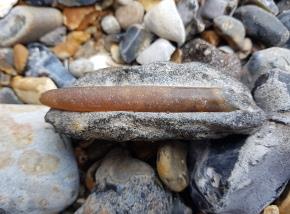
Challenge Two: Play I Spy
It’s amazing what you can see what you stop and look around.
You can start your own game and see what you can spot wherever you are or download the Deep History Coast I Spy sheet and keep your eyes peeled on the shoreline.

Challenge Three: Go Beach Combing
You never know what hidden treasures await you on a walk along the beach.
Every object has a story to tell. Even the sand was once a rock and might have been part of a mountain or cliff face and travelled thousands of miles to be on this beach beneath your feet! Whether it’s a million-year-old fossil, piece of driftwood or lump of chalk, why not save what you find and use it in a piece of natural art (challenge 11) or write a story about it (challenge 15).
The beaches around Happisburgh have provided some amazing finds including stone tool and flint hand axes. If you’re lucky enough to find one of these incredible objects, make sure you record and share it. Through projects such as Pathways to Ancient Britain these objects help us understand the early humans that came to Britain approx. 900,000 yrs. ago.
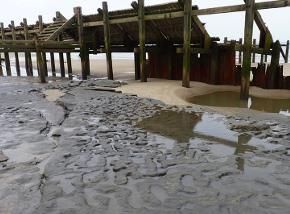
Challenge Four: Explore A Rockpool
Every tide leaves behind a secret snap shot of ocean life.
There are some great places to go rock pooling in north Norfolk. Just plan your visit for low tide and discover the mini ecosystems hidden amongst the rocks. You can simply sit back and see what creatures are waiting to be discovered or grab a net and bucket to get a closer look. Just remember to be gentle with the creatures you find and return them to the pool. There’s a lot more than fish and seaweed under the waves. Look a little deeper and just off the coast of Sheringham and Cromer you’ll find the world’s longest chalk reef, the Cromer Shoals Chalk Bed, which stretches for over 20 miles and is 100-million years old.
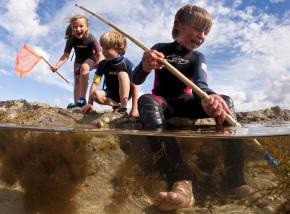
Challenge Five: Camp Out
Try out wild camping or pitch a tent in your back garden - just grab your torch and away you go!
You can cosy up in a tent, or if the weather is nice, sleep out under the stars. Just imagine what it would have been like for early man visiting Norfolk for the first time. Where would they have found shelter and slept? What would they have had for dinner? This is also one of the National Trust's 50 things to do before you’re 11 ¾ activities so can find some useful tips and ideas on their website.
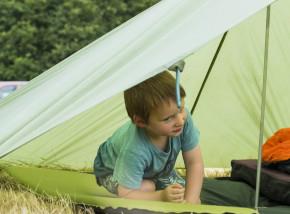
DISCOVERY MILESTONES
Challenge Six: Explore The Deep History Coast
With 36km of coastline and millions of years of history there’s always something surprising to discover on the Deep History Coast.
Visit any of the 11 Discovery Points along the coastal Discovery Trail then pop into the Visitor Information Centre in Cromer and immerse yourself in the Discovery Zone. Or explore at home with the free Deep History Coast app. Did you know this part of the coastline, was also the last part of Britain joined to the continent by Doggerland, a strip of land finally submerged approx. 7,000 years ago?
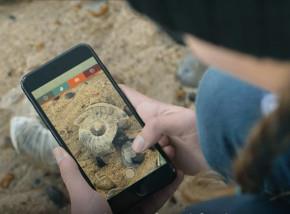
Challenge Seven: Go on a Sensory Scavenger Hunt
Use all your senses on this sensory scavenger hunt adventure.
Think about where you’re going, what might you see, hear, smell, touch or maybe even taste. Can you spot a mushroom, listen for a bird song, smell damp leaves, find something soft and smooth or pick a wild blackberry? Make your own hunt or find one online to start your journey.
Challenge Eight: Gather Some Seeds
Gather some seeds and grow the trees of the future.
Gather seeds, fruits and nuts to grow local trees. Seed gathering season takes place each year between 23 Step – 23 October. The Tree Council has some great information to start you collecting seeds and even tips on how to grown them.
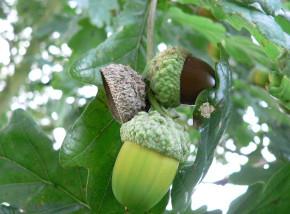
Challenge Nine: Have a Wildlife Adventure
There are worlds to explore just outside your front door.
There may not be giant deer, hyenas and mammoths roaming Norfolk any more, but there’s still plenty of wildlife to uncover. The Norfolk Wildlife Trust has lots of information to get you started. You can search explore at home and get to know a tree or build a hedgehog house. More advanced adventures could also get involved in some citizen science and support Wildlife in Common project.
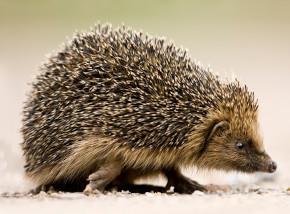
Challenge Ten: Practice Yoga
Boost your strength, flexibility, and coordination through yoga.
Yoga is great for your body and mind and can help with both mental and physical wellbeing. Why not try a class near you or there are some great online videos like Cosmic Kids Yoga.
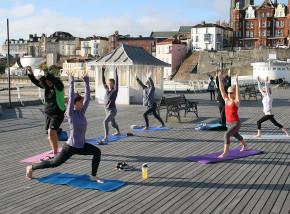
IMAGINATIVE MILESTONES
Challenge Eleven: Make Some Natural Art
With the world as your canvas the only limit is your imagination!
Make drawings and sculptures in the sand, take a bark rubbing or collect natural objects to create different colours and textures in your art. Whatever you make, don’t forget to take a picture and share on social media using #DeepHistoryCoast and #MMChallenge.
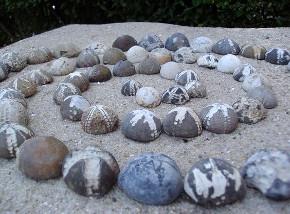
Challenge Twelve: Be Kind
Be kind. It can be a big or small gesture, as long as it makes someone smile, you’re on the right track.
Even the smallest act of kindness can make someone’s day. It doesn’t have to be anything big or complicated just something that will make someone smile. This can be as simple as putting up a picture (maybe your creation for challenge 11 or 13) in a window to make a stranger smile, making your mum or dad a cup of tea or discovering more about one of the Mammoth Marathon charities. You could even ask people to sponsor your challenge, just like a real marathon and raise money for one of them. You could try and do 26 random acts of kindness one for every mile of the race.

Challenge Thirteen: Get Colourfully Creative
Make a wonderful work of art with our three-colour challenge.
Simply close your eyes, randomly choose three pens or coloured pencils, then see who can come up with the most creative artwork. You can use our Deep History Coast colouring sheets to bring ancient animals back to life with an artist makeover, or come up with your own creation.
.jpg)
Challenge Fourteen: Design Your Own Sports Kit
Whatever your sport, do it in style!
Whether it’s a football shirt, cycling helmet, running jersey or a brand new sport, get creative and design your own kit.

Challenge Fifteen: Tell a Story
We all love a good story so have a go at making up your own and sharing.
You can use your adventures and the things you’ve learnt completing these challenges to create your story. Then share it with friends and family. How will you tell your story? You can write it down, put on a play or tell it while sitting around a camp fire.
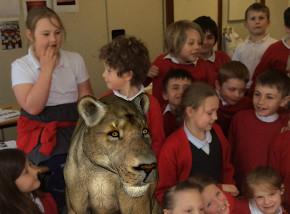
ACTIVE MILESTONES
Challenge Sixteen: Do a Lap of Honour
Can you do 26 or 13 laps? Do thirteen laps for a half marathon or 26 for a full marathon.
You can do a lap of anything from your street, house, even your sofa! You can do all the laps in one go or break it into chunks like Captain Tom Moore and do a few each day.
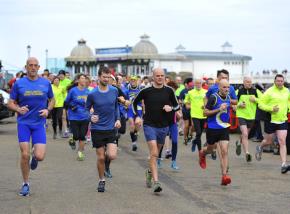
Challenge Seventeen: Target Practice
Get ready, aim, fire!
You can use anything you can find to tr to hit a target; balls in a bucket, toys in the box, sticky darts on a window. You guessed it, your goal is to get 13 or 26 in under minute. If you really want a challenge, why not add in a sock pairing race? Put all the socks in a pile and see who can pair, ball and toss them fastest. First one to get 10 pairs into the sock drawer wins!

Challenge Eighteen: Create an Obstacle Course
Your obstacle course can be as creative and challenging as you like.
Go over, under, round or through it. Use your imagination to make it extra fun. Try pretending the floor is dinosaur infested water and you have to make it to the other side of the room. Or for younger explorers, how about doing part of the course in different ways, such as walking like a crab or stomping like a mammoth? You could even combine it with challenge 16 and see how many laps you can do.
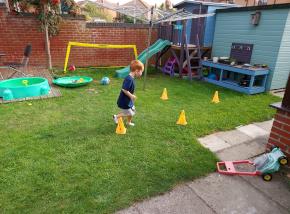
Challenge Nineteen: Do Some Keep-Ups
Can you keep up?
Whether it’s a football, hockey stick and ball, or even a frying pan and pair of socks; can you do at least 13 or 26 keep-ups in a row? If it’s too hard why not try using something different or work as a team, throwing something back and forth without letting your item touch the floor.
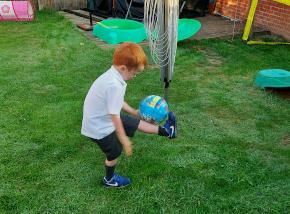
Challenge Twenty: Become a Hunter Gatherer!
Pretend to be a Hominin and become a hunter gatherer! Find and gather 13 items from around the house - no hands allowed!
Either hide 13 items, such as soft toys, around the house or make a list of 13 (ideally unbreakable) items from around your home. Players must find the objects then return them to ‘home’, without using hands! You can do this as a team or race against an opponent to see who can collect the most items.
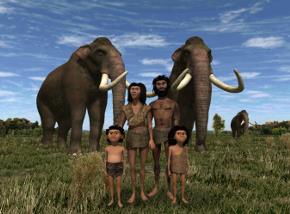
UP FOR A CHALLENGE MILESTONES
Challenge Twenty-One: Forage For Food
Autumn is a great time for finding nuts and berries.
Without local shops and supermarkets, early man had to forage for their food. Explore the area around you and see what wild food you can find. The Woodland Trust has some great tips on what to look for and how to forage responsibly and safely. Make sure you always check what you've picked with an adult and never eat anything you’re not sure about. And remember you’re not the only ones foraging; make sure you’re respectful of the surrounding wildlife and leave enough for them to eat.
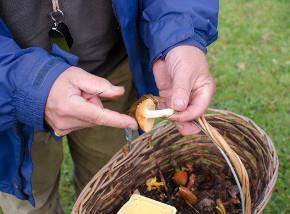
Challenge Twenty-Two: Complete a Mammoth Task
Complete ‘a mammoth task’ by downloading the free Deep History Coast App to discover and meet a mammoth.
North Norfolk’s Deep History Coast is rich with fossils and has revealed some significant finds. One of the most famous is the oldest and best-preserved mammoth skeleton in the world; discovered in the cliffs between East and West Runton. You never know what you’ll find on a walk along the beach, but to help you look for something interesting, download the free Deep History Coast app to collect all your virtual mammoth bones and race to reassemble them in the mammoth task puzzle game.
Challenge Twenty-Three: Discover Dark Skies
Turn out the lights and see the night sky fills with stars.
With low levels of light pollution, north Norfolk offers an unrivalled view of the night sky and is one of the few places in the UK where you can see the northern lights, or aurora borealis. Dark skies can be enjoyed by anyone and on a clear night, with little light pollution, you can enjoy star gazing. Just wrap up warm, take a flask and your binoculars and enjoy the wonder of the skies above.
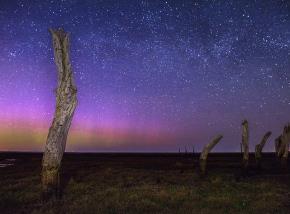
Challenge Twenty-Four: Eat Smart
Make a healthy snack or dinner to keep you powering through the challenges.
You’re going to need lots of energy to complete these challenges, so it’s important to know what fuel you’re using and make sure you’re eating the right stuff. Why not bake a healthy snack or cook dinner together? NHS Change for Life has some great tips and recipes for you to try.
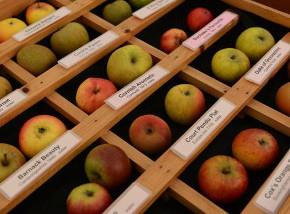
Challenge Twenty-Five: Help Keep Beaches Clean
Take part in a beach litter pick.
There is a saying; 'take only photographs and leave only footprints'. While many people respect this, unfortunately a large amount of litter ends up in the seas and on beaches each year. You can play your part simply by making sure you take home your rubbish and recycling, or put any rubbish you find on the beach in the bin. You can also take part in a socially distanced beach clean like those organised by the Marine Conservation Society. We have six Blue Flag beaches in north Norfolk which means they are some of the cleanest in the country.
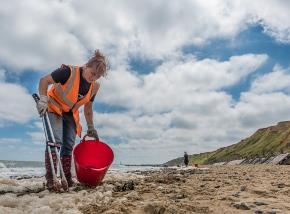
Challenge Twenty-Six: Follow the Footprints
Make a footprint cast or animal print trap and see what you can discover.
We’ve all seen footprints, either human and animal, in the sand, snow or mud and you probably haven’t thought a lot about it. But did you know fossilised footprints found at Happisburgh, together with stone tools found, places early humans in Britain 900,000 years ago, that’s 350,000 years earlier than previously thought! These early footprints show two larger, probably adult, sets of feet walking steadily along the beach with smaller footprints running around them. Can you picture the scene? Have a go at making your own footprint cast at home or make an animal foot print trap in your garden.
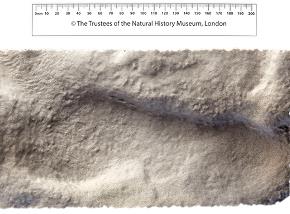
Mammoth Marathon Challenges